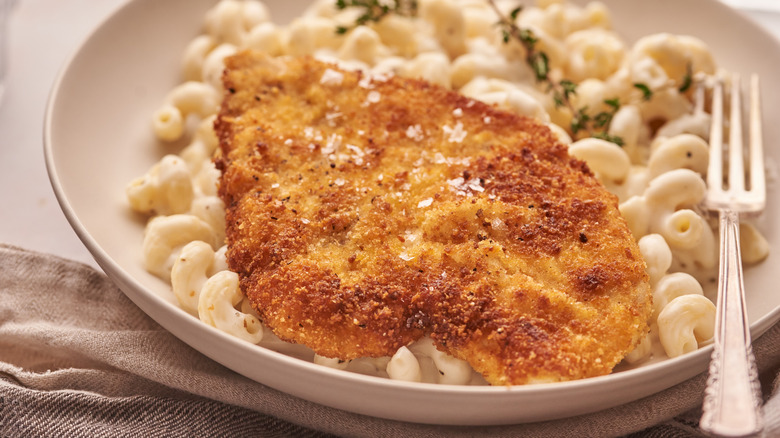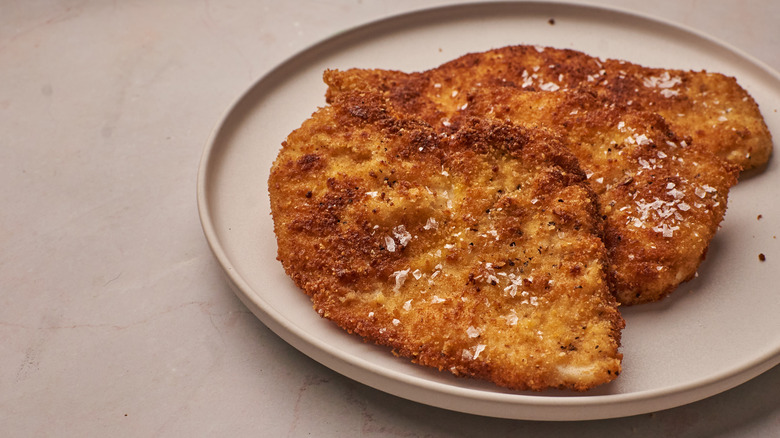The Secret Ingredient For Extra Crispy Chicken Cutlets
There's much ado about flavor — and rightly so. We love the way spice tickles the palate, the way sour pinches and twists the tongue, the way sweetness satisfies the soul, and how salt electrifies and amplifies all other flavors. Chefs, like painters or composers, wield and combine flavors to create dishes that are more than the sum of their parts.
But flavor is impacted by a host of factors outside the realm of taste, such as color and texture. Concerning the latter, think of how rich, fatty foods coat the mouth, how playful the chew of gummy candy can be, and how a fresh potato chip shatters under the teeth. While the uniform creamy consistency of a shrimp bisque is something to be savored and appreciated, textures can also provide balance or contrast to a dish. Think of how that same bisque might be punched up with the addition of some crunchy croutons, or how unctuous beads of salmon roe pleasantly pop over chewy sushi rice in a nice piece of ikura nigiri.
One of the most classic textural pairings is the deceptively-simple chicken cutlet, which, in its most ideal state, is a tender and juicy chicken breast, pounded or sliced thin and enveloped by a profoundly crispy crust. And it can be used across a range of dishes, from chicken parmigiana to ramen. While recipes often call for commonplace techniques and ubiquitous ingredients, our recipe experts have zeroed in on an ingredient that truly unlocks amazing chicken cutlets.
Cornstarch ensures maximum crunch
Tasting Table recipe developer Michelle McGlinn has an eye for both ingredients and style. She has a background in fashion and design, which informs her approach to recipe development as she explores intriguing flavor and texture pairings and tests her recipes thoroughly to ensure balance and consistency. That dedication to perfection is apparent in our recipe for the crispiest chicken cutlets.
There are several critical steps in this recipe that ensure that your cutlets are evenly cooked and blissfully crunchy without being dried out or burnt. These include slicing and pounding the breast for an even form and maximum surface area and following the precise dredging process to make sure you have a crust that adheres. Speaking of the crust and dredging, the recipe calls for an ingredient that is quite critical for a pleasing end product: cornstarch.
You'll notice that a dose of cornstarch is mixed in with the flour that forms the base of our dredge, 1 tablespoon per cup of flour, to be exact. The cornstarch serves two purposes here. First, when combined with the flour, it helps absorb more of the moisture from the cutlet which allows for a swifter, crispier fry. Second, cornstarch has a higher starch content than flour, which becomes crunchy when applied to hot oil.
Once you're confident in your cutlet game, feel free to tweak the seasonings in the flour and or breadcrumbs to watch the final application. Just don't skimp on the cornstarch.

